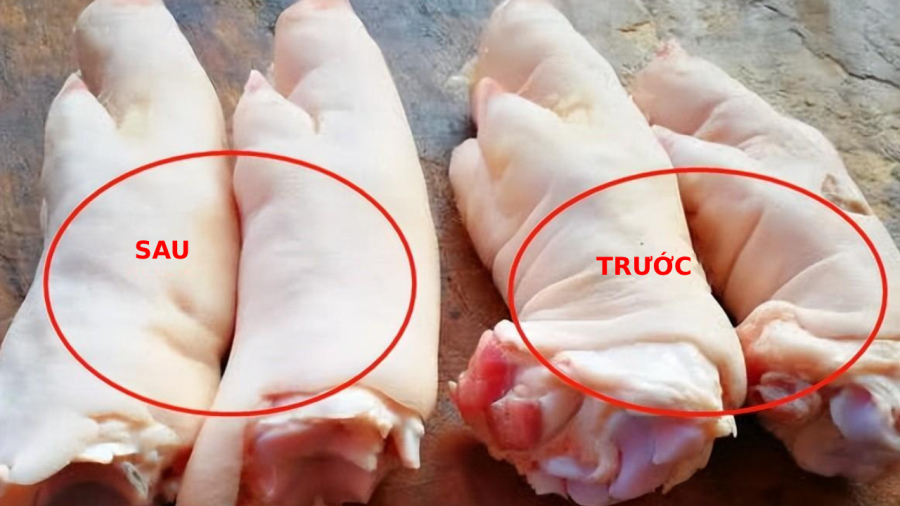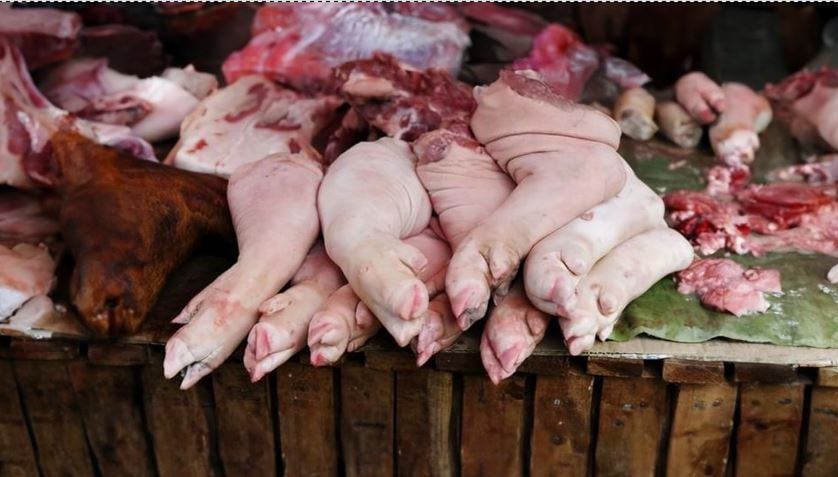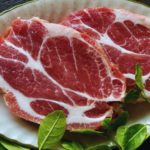Pork trotters are a familiar food for everyone. You can cook pork trotters into many dishes such as stew, braised, soup… When buying pork trotters, you should pay attention to distinguishing between the front and hind trotters. These two types will have some differences in texture and taste. Choosing the right type will make your dish more flavorful.
Front trotters
When moving, pigs mainly use their front trotters to exert force on the surrounding objects. Since they mainly move with their front trotters, the hoof on the front trotter of the pig is usually larger than the hind hoof. The meat on the front trotters will also be firmer and have more tendons. Front trotters are usually richer and sweeter in flavor. Therefore, if you want to make stew, faux gras, or boil, you should choose front trotters. When cooked, trotters will be soft, well-seasoned, and more delicious.

Hind trotters
Hind trotters mainly support movement and help pigs maintain balance. The hind trotters of pigs are less active, so the meat will not be as firm as the front trotters. The hind trotters have loose meat, more fat, and are not as sweet as the front trotters. Hind trotters can be used in stir-fries, minced meat, porridge…
Distinguishing between front trotters and hind trotters
– Check the tendon
As mentioned above, the front trotters of pigs usually have more tendons. The tough and crisp tendon is the most delicious part of the trotter. If you want more tendons, you should choose front trotters. The main structure of the front trotter is muscle, tendon, and ligament. The hind trotters of pigs are less active, so the development of muscle, tendon, and ligament is less.
When buying trotters, you should look at the cross-sectional cut. If you see tendons on the cut surface, it is the front trotter, and if there are no tendons, it is the hind trotter.
– Observe the ratio of lean meat and fat
Front trotters have more lean meat and less fat, making them flavorful without being greasy. The hind trotter has less movement, so the meat and muscle are loose with more interspersed fat. If you don’t like fat, you should choose front trotters.
Observe the cross-sectional cut of the trotter. If it looks plump, with a firm meat texture and more lean meat, it is the front trotter.
Considerations when buying pork trotters

Whether buying front trotters or hind trotters, you should pay attention to the following points.
First, when touching the trotters, if you feel that the surface of the meat is moist, firm, and not sticky, it is fresh pork trotter. Do not buy if the meat is sticky.
Pork trotters often have a slightly creamy color. Do not choose white trotters as they may have been treated with chemicals.






































